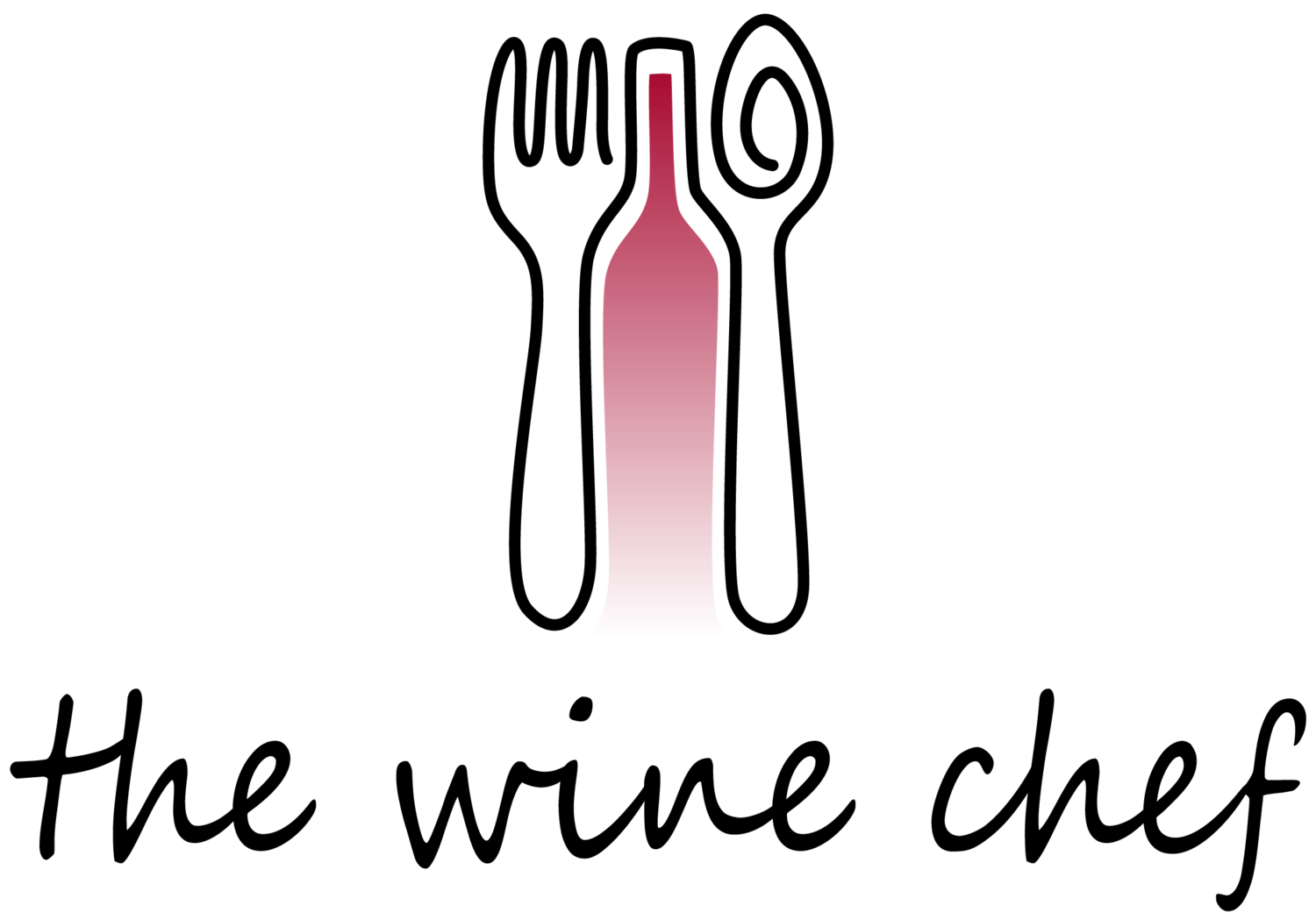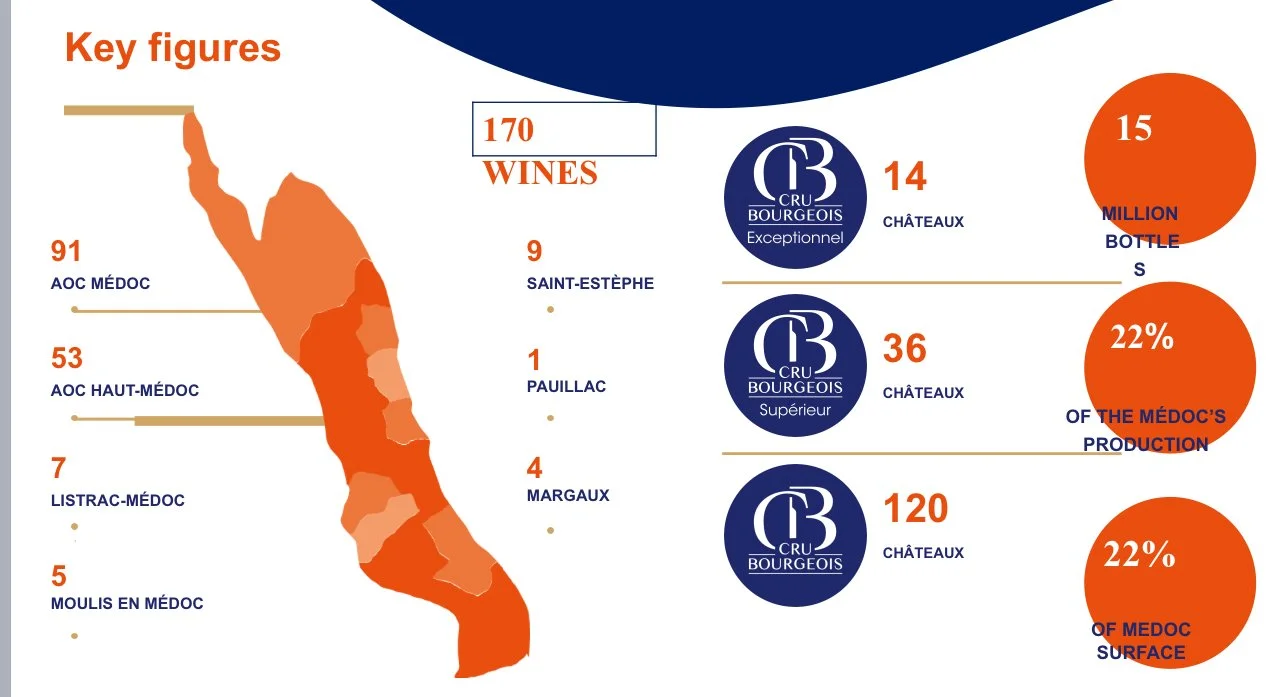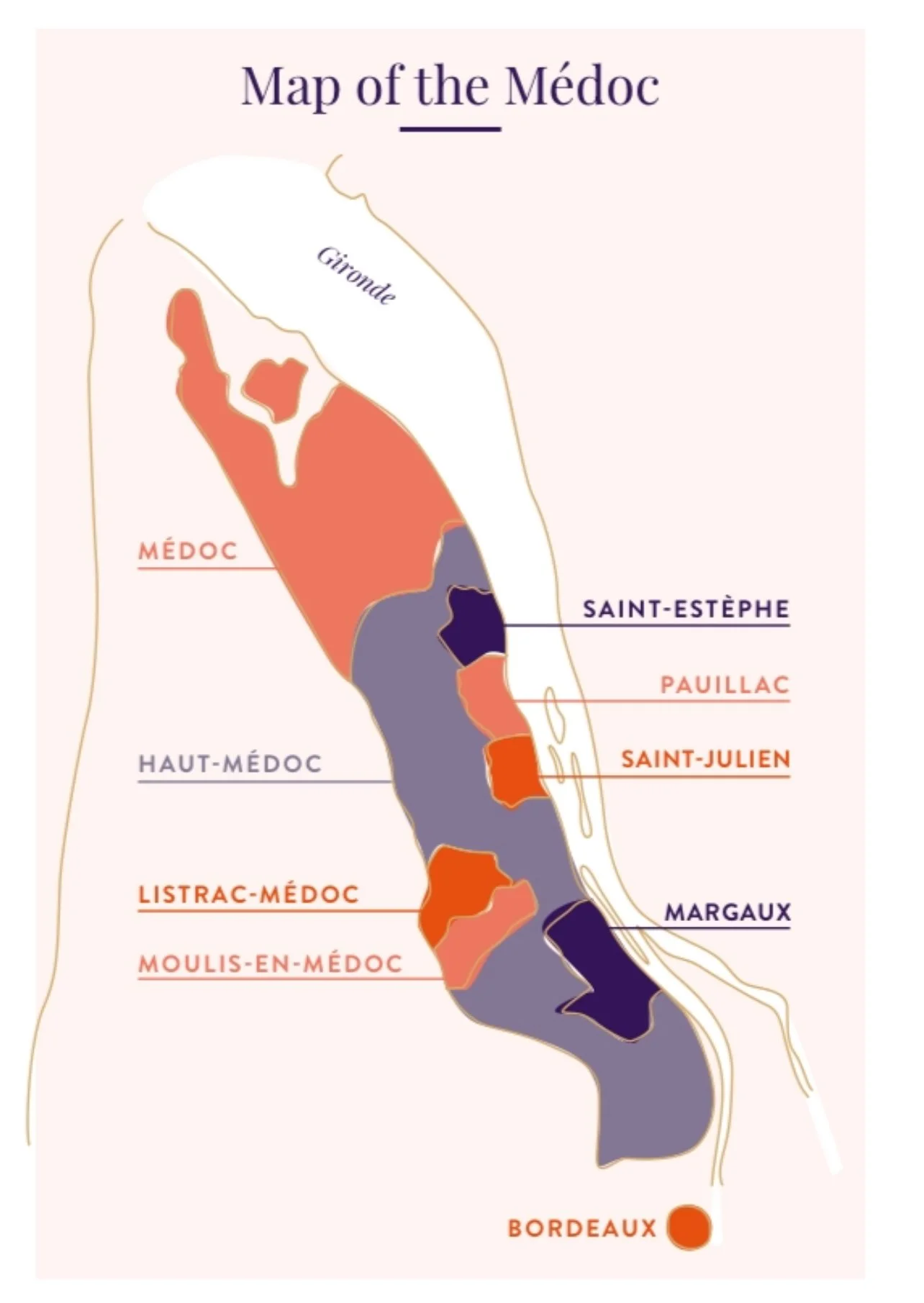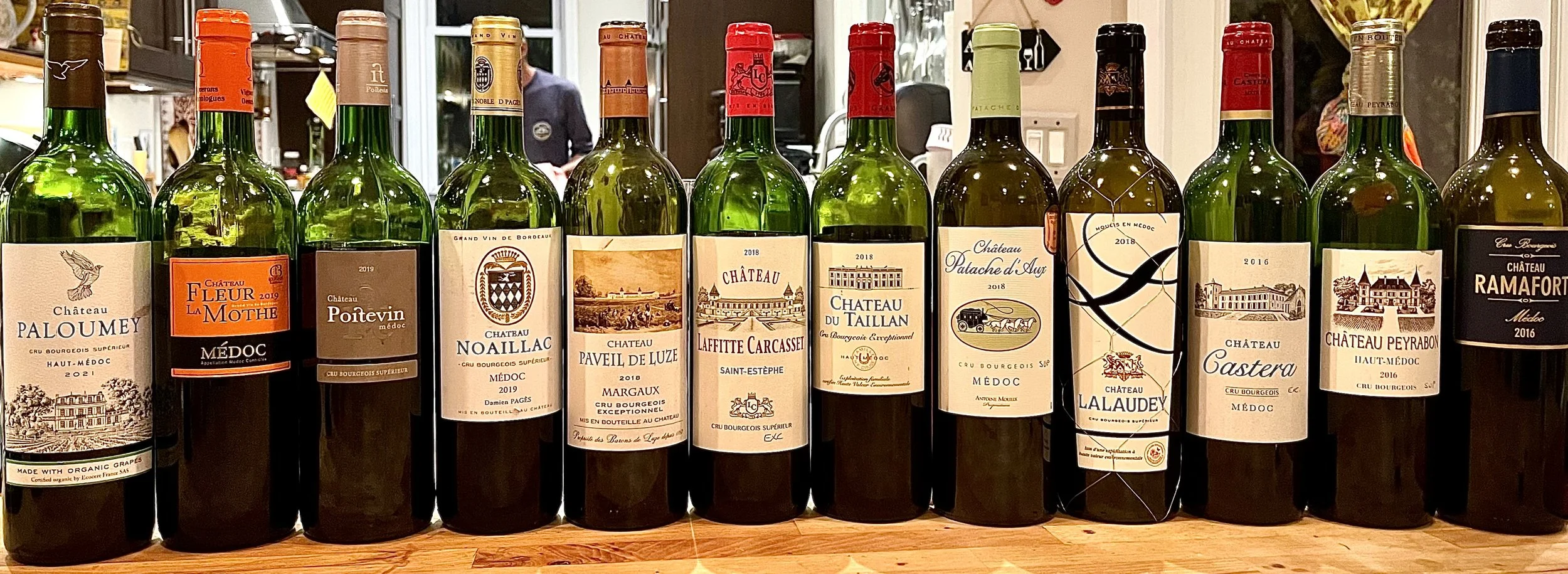Cru Bourgeois: Excellent Bordeaux Without the Sticker Shock
/When most people think of Bordeaux, they picture jaw-dropping price tags and wines locked away in temperature-controlled cellars, destined for special occasions that never arrive. But what many wine lovers don't realize is that there's a category of Bordeaux wines that delivers exceptional quality, with most hovering in the $25–$35 range.
This wine classification is called Cru Bourgeois, and if you've been passing them by because of their unfamiliar names, or somewhat stodgy labels (the classic black and white image of a fancy Château), you're missing out on some great red wines.
What Exactly Is Cru Bourgeois?
The term "Cru Bourgeois" dates back to the medieval period when Bordeaux's prosperous merchant class, the bourgeoisie, owned vineyards in the Médoc region. While they weren't the grand estates of nobility, they were producing excellent wines nonetheless. The modern classification system for these wines was established in 1932 and has evolved considerably since then.
Today, the Cru Bourgeois classification is overseen by L’Alliance des Crus Bourgeois du Médoc, a group of about 170 châteaux spanning eight Médoc appellations: Médoc, Haut-Médoc, Listrac-Médoc, Moulis-en-Médoc, Margaux, Pauillac, Saint-Julien, and Saint-Estèphe.
Earning a Cru Bourgeois label starts with a blind tasting of five vintages from each estate. To reach the higher tiers, Supérieur or Exceptionnel, wineries must demonstrate quality and care across every aspect of production, from vineyard practices and cellar techniques to sustainability and even wine tourism.
Expert panels taste the wines, visit the estates, and review certifications and production methods, all under the oversight of the French government. The result is a classification that remains a reliable guide to quality, consistency, and a genuine commitment to the land. While not every château is fully organic, there’s a clear trend toward environmentally responsible practices, with many cutting back on chemicals and promoting biodiversity in their vineyards.
If you’d like to read more on Cru Bourgeois, here’s an article I wrote back in 2021:
Proof in the Glass
I would be happy with any of these wines on my table! Photo: Lisa Denning
Unlike their pricier Grand Cru Classé cousins that can require a decade or more of cellaring, these wines tend to drink well at a younger age. However, patience is rewarded, too. I recently tasted twelve Cru Bourgeois wines spanning the 2016, 2018, 2019, and 2021 vintages.
The 2016s were still lively and fragrant, with smooth yet grippy tannins, showing that these wines can age gracefully. The 2018s were plush and approachable, offering ripe fruit and with the elegance that made this vintage so successful across Bordeaux. The 2021 displayed a lot of fresh fruit notes, making it perfect with food, and hard to resist having another pour. And the 2019s were especially delightful: youthful yet with their fruit balanced by acidity and a firm tannic backbone, promising even more with time in the cellar.
While they don’t come wrapped in colorful, modern labels, what you will find behind the classic fonts and crests are some of the most affordable, age-worthy, and enjoyable red wines on the market. Structured and food-friendly, Cru Bourgeois wines bring rich flavors of plum, blackberry, black cherry, and raspberry, plus hints of tobacco and graphite to the table. They’re perfect for both a Saturday night soirée or a casual Tuesday night with roast chicken or a cheeseburger.
Want to find these delicious wines? Look for the Cru Bourgeois designation on the front label, the “CB” sticker on the back, and the QR code (since 2010) linking to the château’s info.
Six of The Wine Chef’s Favorites
Click on the names below to find out where to purchase the wines. Note: the prices below are approximate.
Château Peyrabon Haut-Médoc Cru Bourgeois Supérieur 2016 ($23)
Bright and perfumed with aromas of red currant, violet, and a whisper of oak spice. The palate is supple and balanced, with soft but firm tannins, a saline lift, and just enough freshness to carry the fruit through a long, savory finish.
Château Castera Médoc Cru Bourgeois Exceptionnel 2016 ($23)
Fresh and energetic, offering black cherry, graphite, and a touch of cedar. The texture is smooth but structured, with fine-grained tannins and a subtle saline edge that keeps the finish crisp and clean.
Château Paveil de Luze Margaux Cru Bourgeois Exceptionnel 2018 ($43)
Elegantly fragrant, with aromas of raspberry, plum, and rose petals. The palate is silky and generous, showing layers of ripe fruit, gentle spice, and a long, refined finish that lingers with floral and mineral notes.
Château du Taillan Haut-Médoc Cru Bourgeois Exceptionnel 2018 ($25)
Expressive and aromatic, with scents of blackberry, herbs, and tobacco. On the palate, it’s dry and firm, with grippy tannins, bright acidity, and a touch of green peppercorn and graphite on the savory finish—a true Médoc classic.
Château Fleur La Mothe Médoc Cru Bourgeois Supérieur 2019 ($17)
Lush and approachable, with enticing aromas of black cherry, mocha, and dried herbs. The palate is round and velvety, supported by ripe tannins and a long finish that combines dark fruit with a hint of cocoa. Drinking beautifully now.
Château Paloumey Haut-Médoc Cru Bourgeois Exceptionnel 2021 ($31)
Certified organic and wonderfully aromatic, this wine shows notes of wild berries, licorice, and sea breeze. Medium-bodied with silky tannins and a saline finish, it balances freshness and depth—modern, polished, and thoroughly drinkable.








